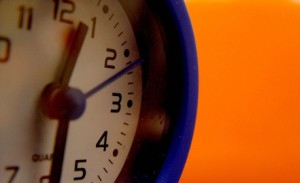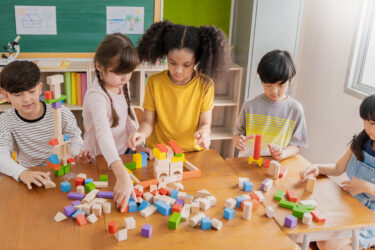One of the easiest to use and often underused behavior intervention tools is a timer. They are easy to use, easy to transport, and you can use them for just about anything! There are many different types of timers including: visual, sand/hourglass, egg, task (based on amount of tasks completed vs. elapsed time), and countdown. Before kids are able to tell time, they do not have a solid understanding of time concepts. You can tell them five more minutes to play, but in reality that doesn’t mean much to them until they can read a clock. Timers allow kids to see the time remaining without having to be able to tell time. Kids can look at a timer and see how much time they have left without having to ask an adult, “How much time?” multiple times in a day. They can be incorporated in many activities throughout the day. You can set a timer to show your child how much time they have left to play before it is time to clean up. Always give a “heads up” so they know the timer is set, so they are not alarmed when it goes off. Pairing a “two more minutes” warning with a timer can decrease the “I don’t want to leave the yet” meltdowns over time.
Timers can be helpful with:
- Transitioning – Clearly define how much time your kiddo has left to play before having to clean up/leave to go home.
- Independence – You can set a timer for five minutes for your child to get ready for school in the morning. After the timer goes off then you provide support with the remaining clothes they need to put on. It can be phrased as a “beat the clock” game for kids that might be a little bit pokey in the morning.
- Increasing stamina – Today you will silent read for five minutes … tomorrow for seven minutes … etc.
- Break/Time away – Timers can be used to show your child how long they have remaining in an earned break or how much time they have left to calm their body before returning to play.
- Concept of time – Kids are likely to be more focused on a topic when they know there is an end in sight, instead of asking, “Are we done yet?” or “How long until lunch?” They can look at the timer and know for themselves without having to ask.
- Tolerating non-preferred activities – “First you need to work on your math for 15 minutes and then you can have a five-minute break.”
- Brushing teeth – Dentists recommend brushing teeth for two minutes. Some Firefly toothbrushes have built in green, yellow, red timers. The timer goes for one minute. When the timer goes off you turn it on again and switch to your other row of teeth.
- Washing hands – The CDC recommends washing hands for at least 20 seconds which is about the same as singing “Happy Birthday” two times. Pairing a timer with washing hands can ensure your child is washing their hands for as long as they should be. You can also find candles that play “Happy Birthday” which gives kids an auditory timer.
Additional resources:
http://www.timetimer.com/
http://www.online-stopwatch.com/countdown-clock/
Tina Pratt, M.Ed BCESC Behavior Intervention Coach





